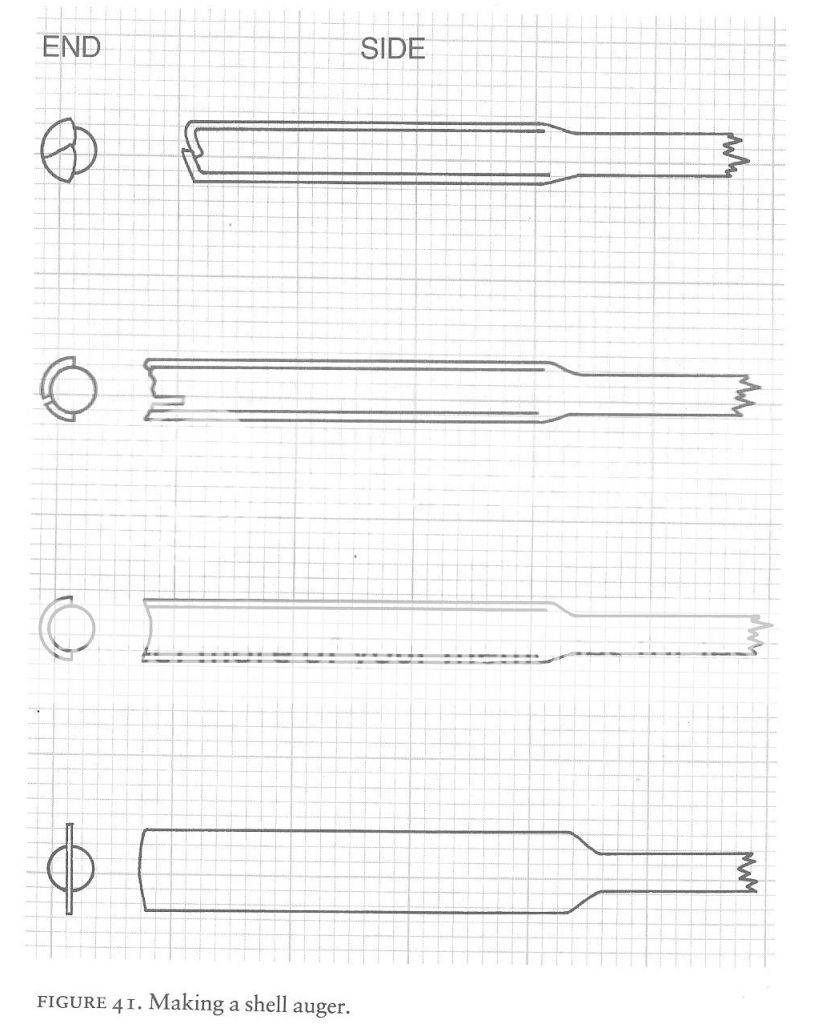As my mind wanders arround to other activities I was reading an old book about old (as in Medieval and Rennaisance) instruments "The Amateur Wind Instrument Maker" and in the final pages come accross these instructions. As you can imagine making woodwind instrument making requires the ability to drill very long straight exact holes... so if this is of some use...
For boring long straight holes:
"The stages of manufacture are sketched in figure 41. A length of drill rod 1/16 in. to 1/8 in. less in diameter than the diameter of the desired hole is used, heated red hot, and flattened on the anvil fo a distance of 3 1/2 in. to 4 in. back from the end view should show a half circle sectioin with the center of the arc in line with the center of the main piece of rod. A longitudinal slit is next made for a distance about equal to the diameter of the arc and dividing it in the ratio of 1:2. The tip is again heated red hot and the two sections bent in almost to a right angle with the narrow piece overlapping the wider one. The overlapping edge will be the cutting edge of the bit, and it should be ground and sharpened so that its leading point is at the axis of the auger. Finally the tip should be reheated, quenched and tempered.
A flat tipped bit, which will not bore straight by itself but is useful for enlarging a hole made by one of the others, is made by starting the process above. Then when the end has been hammered flat, the tip is simply ground to a 60 degree V-shape with the cutting edges slightly relieved."
here is the accompanying picture:
http://s1262.photobucket.com/albums/ii614/ctreichel/?action=view¤t=auger001.jpg

